|
Self Teaching Unit:
Apostrophes
© 2000, 1978 Margaret L.
Benner
An apostrophe
is a small punctuation mark ( ’ )
placed after a noun to show that the
noun owns something.

The apostrophe will always be placed
either before or after an s
at the end of the noun owner.
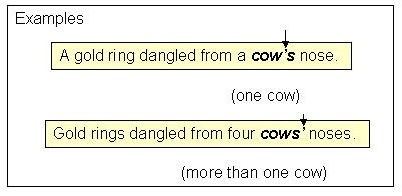
Always the noun owner will be followed (usually
immediately) by the thing it owns.
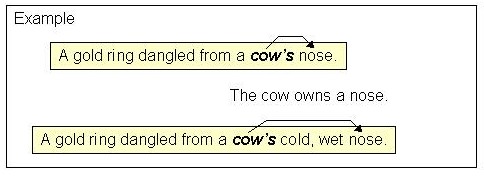
How can you know:
1.
when to use an apostrophe
AND
2.
where to place the apostrophe CORRECTLY?
TO MAKE A
SINGULAR NOUN POSSESSIVE, FOLLOW THESE STEPS:
First,
determine which noun is the owner:
a cow’s nose
To qualify for apostrophe use, the owner:
1.
must be a noun (cow)
2.
must be positioned in front of the thing it owns


That’s all there is to it!
a cow’s nose means a cow owns a nose
Link
to Exercise 1
Now you know when and how to make a
singular noun show possession with an apostrophe.
The rules for apostrophe use with a plural noun owner are just
a little more complicated.
Follow these steps.

2.
If the noun owner is plural (more than one owner), do these two
things.
- Place
an apostrophe at the end of the noun owner.
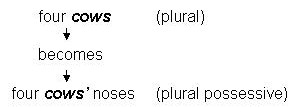
- Check
to see whether the plural noun already ends in s.
four
cows’ noses
(yes, it does)
If the plural noun DOES
end in s (as most English plural
nouns do), do NOT add another s.
You have already formed the plural possessive.
four cows’
noses
Here are some examples of plural
possessive nouns. Notice how each
follows the rules for apostrophe placement.
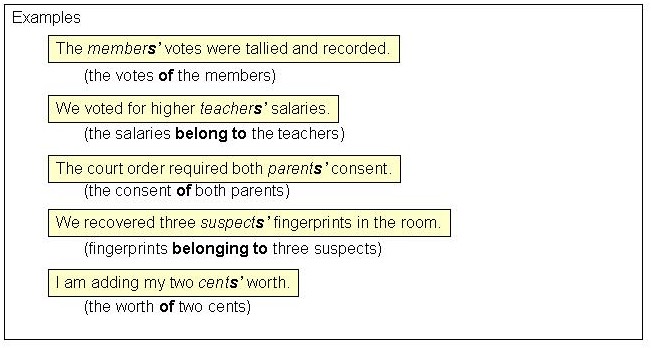
Link
to Exercise 2
The
exception to the plural possessive rule . . .
A few plural nouns do not
end in s. Instead, these
nouns form their plural with an internal
change.
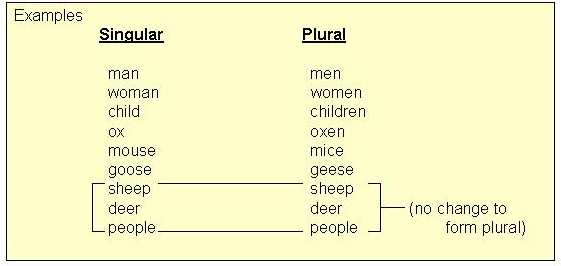
To form the possessive of such plural
nouns, follow these steps.
For our example, we will use this
sentence:




Now
the plural possessive is formed correctly.
NOTE THE DIFFERENCE!
Correct possessive form for plural noun
owners that end in s:

Correct possessive form for plural noun
owners that do not end in s:

Link
to Exercise 3
SHOWING POSSESSION WITH PRONOUNS
You have learned that nouns
form their possessive by adding apostrophes.
Some pronouns form their
possessive in the same way as singular possessive nouns.
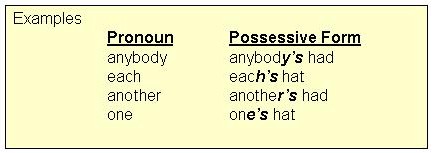
However, one group of pronouns does NOT add an apostrophe to form the possessive.
This group is the personal pronouns.
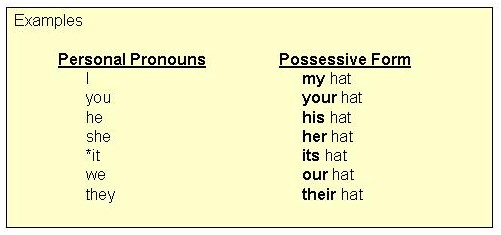
Most of these personal pronouns offer no
problem.
*Only its
gives many people trouble.
Some writers mistakenly write it’s to indicate the
possessive form of it.
EXAMPLE:
 THIS IS AN ERROR! THIS IS AN ERROR!
THE CORRECT USE OF IT’S
. . .
It’s is ALWAYS a
contraction for it is or it
has.
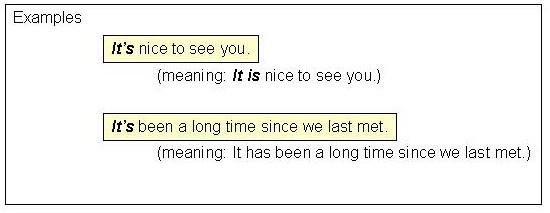
Its (NO
apostrophe) is the possessive form of it.
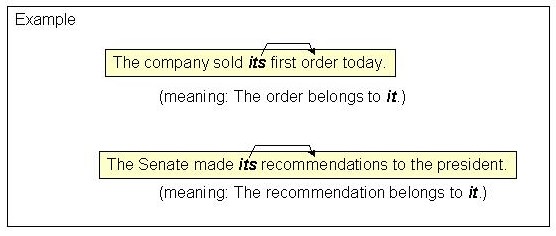
Link
to Exercise 4
Link
to the POST
TEST
|